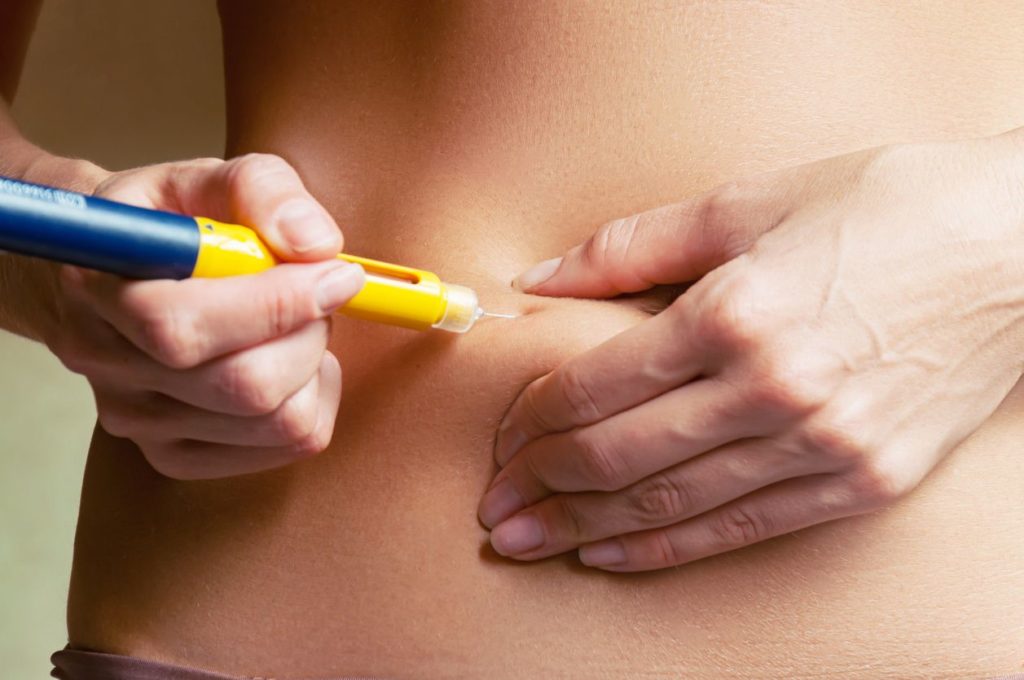Thinking about egg freezing? You’re likely curious as to what steps are involved in the egg freezing process. Today, we will share the process of egg freezing, the timeline and what is needed from a patient’s perspective.
Step 1: Schedule A Consult With A Reproductive Endocrinologist

 The first step of the egg freezing process is consulting with a fertility specialist. These physicians are called Reproductive Endocrinologists. These physicians are OB/GYNs, with three extra years of school (called a fellowship) where the physician learns solely about the female reproductive system. That is why we egg freeze with them! Because they are very specialized experts.
The first step of the egg freezing process is consulting with a fertility specialist. These physicians are called Reproductive Endocrinologists. These physicians are OB/GYNs, with three extra years of school (called a fellowship) where the physician learns solely about the female reproductive system. That is why we egg freeze with them! Because they are very specialized experts.
While IVF began in 1978, egg freezing was considered experimental until 2012 and therefore a newer technology. While most clinics performing egg freezing also perform IVF, there are some that only offer egg freezing.
The initial consult will be a conversation with a physician to learn about your history, current health and family planning goals. This consult can be done in person, but is often done via phone or video (ie: Skype) if your clinic is not local. More and more patients are opting to choose clinics outside of their local area, or even abroad, to reduce the cost of treatment and get a second opinion.
While the method of collecting eggs for egg freezing is similar to in vitro fertilization, the actual freezing of eggs is a more challenging process and you should find a clinic that has experience in both.
Step 2: Baseline Testing
Following your initial consult, your next step is to do baseline testing. Baseline testing assesses your current fertility situation. You will get bloodwork done on day 2 – 4 of your cycle, in addition to a transvaginal ultrasound. Based on your initial number of follicles (potential eggs) and hormone levels, your physician will decide your medication protocol so the optimal amount of eggs can be grown. If there are any other underlying issues that are affecting your fertility and the egg freezing process, they will likely be discovered and discussed at this time.
Step 3: Administer Medications & Monitoring Appointments


After your physician prescribes you medications, you will administer them to yourself for 8 – 12 days. These medications are crucial because they will grow multiple eggs at once, so multiple eggs can be retrieved.
Based on how your follicles are growing, you will do something every few days called “monitoring”. At a monitoring appointment, you get your blood taken and a transvaginal ultrasound is performed. The doctor monitors your progress to make sure your follicles are growing at an optimal level. Monitoring appointments are almost always in the morning. Based on the results, you will receive a phone call to increase/decrease your dosage of medication. Sometimes, you will stay the course and not adjust your medication at all. The number and frequency of these visits depend on your clinic and your response to the medications.
If you are traveling for egg freezing treatment (meaning the location where you will have your egg retrieval is one where you must fly to), you can have your monitoring appointments in your home city and then travel to your clinic destination on day 6 – 8 of your cycle. Most records are fully electronic nowadays, so the clinic in your home city can send your records electronically so your physician can review them.
Step 4: Trigger Shot
Once your physician feels your follicles and hormone levels are optimal, you will self-administer a trigger shot. This trigger shot is different from any of the other medications you were taking up until this point. The trigger shot begins the steps towards ovulation so that your eggs can be retrieved. This trigger shot must be done at a very specific time and you will be scheduled for the egg retrieval appointment based on the trigger shot. The timeline of the trigger shot is crucial, so make sure you are in a comfortable location and minimize extracurricular activities that day. Because the trigger shot is administered intramuscularly, some patients prefer to have someone help them administer it.
Step 5: Egg Retrieval Procedure


The egg retrieval procedure is quite painless, outpatient, and patients often go home within 2 hours of their procedure. You will likely be under some form of anesthetic during the procedure.
To collect your eggs, your doctor will use a vaginal ultrasound to guide a very small needle into your ovary, through which your eggs can be withdrawn. You will be told how many eggs were retrieved, viable and able to be frozen within 48 hours. An important point to make here is only the eggs for that cycle will be removed, and you will still have many more eggs should you wish to do a second cycle at a later date. You can return home the same day of the egg retrieval procedure.
Step 6: Post Egg Retrieval
The day after your retrieval, you can return home if you are having your retrieval abroad or away from your home city. Your physician will speak closely with you about every step of the process. For up to a week after your retrieval, you will still have feelings of fullness and bloating.
This is very normal unless you are experiencing significant pain, shortness of breath, difficulty using the bathroom, or rapid weight gain. These can be signs of OHSS (hyperstimulation syndrome) and although rare, should be reported to your doctor immediately.
Remember to minimize all exercise for up to 2 weeks after egg retrieval, or when you begin your next period.
Cayman Fertility Centre offers free consults to patients who would like to discuss their own egg freezing process with a Reproductive Endocrinologist. Dr. Joseph Davis is the main Reproductive Endocrinologist at the center and you can schedule a consult by contacting us here.
